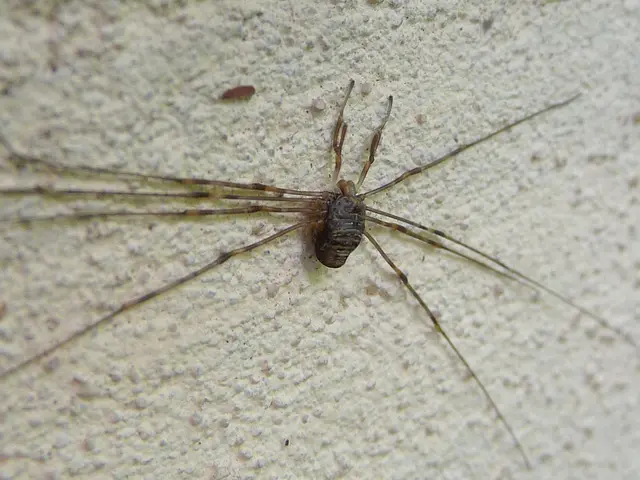Distinguishing Age Spots from Skin Cancer: A Guide onIdentification
Living with the Sun's Marks: Age Spots vs. Skin Cancer - What You Need to Know
Aging gracefully doesn't always mean smooth, flawless skin. As you grow older, you might notice some dark spots appearing on your skin, which could be either age spots or skin cancer. Here's what separates the two, and how to identify each condition.
Age Spots vs. Skin Cancer - A Closer Look
Age spots, often referred to as solar lentigines or liver spots, are harmless dark patches on the skin that often have a yellowish, brown or grayish hue. Unlike skin cancer, age spots don't itch, feel crusty, or require any treatment. These spots develop due to your body producing excess melanin to protect your skin from the sun's harmful UV rays[1]. They typically appear on frequently sun-exposed areas, such as the hands, face, shoulders, or arms.
Skin cancer, on the other hand, is a serious health concern caused by excessive exposure to UV radiation, genetic factors, or other environmental factors. It can manifest on any skin surface, including sun-exposed areas, and, unlike age spots, it's harmful and may spread to other parts of your body[2].
The three most common types of skin cancer are basal cell carcinoma, squamous cell carcinoma, and melanoma. Another type of suspicious spot that might resemble an age spot is actinic keratosis, a precancerous growth caused by excessive UV radiation[2].
The Telltale Signs
Knowing the differences between age spots and skin cancer can help you identify when you may need medical attention.
Age spot symptoms:
- Size: Age spots are typically smaller than a centimeter in diameter[1].
- Color and texture: Age spots are often light brown or black, smooth, and well-defined[1].
- Location: Commonly found on sun-exposed areas, such as the face, hands, shoulders, or arms[1].
Skin cancer symptoms:
- Shape and size: Skin cancer might be asymmetrical and change in size, color, or shape over time[5].
- Multiple colors: Skin cancer can appear with multiple colors, such as pink, purple, or black[5].
- Additional symptoms: Skin cancer may present with other worrying signs, such as pain, itching, oozing, or bleeding[5].
Pictures are Everything
Visuals can help pinpoint whether you're dealing with age spots or something more concerning. Be sure to regularly inspect your skin and consult a healthcare professional if you notice anything unusual[3].
Actinic Keratosis - A Precautionary Tale
Actinic keratosis is a precursor to skin cancer, typically appearing as rough, red or pink patches, scaly bumps, or areas of hardened skin[2]. It's important to monitor these areas, as they could further develop into skin cancer if left untreated.
When in Doubt, Reach Out
If any new, suspicious spots or changes appear on your skin, speak with a healthcare professional to ensure you're taking the proper steps towards maintaining your health[3]. Early detection is key for treating skin cancer effectively.
- In the realm of oncology, melanoma is a type of skin cancer that requires careful monitoring, especially when it resembles an age spot.
- Seniors, being more susceptible to skin conditions, should be aware of the differences between age spots and other skin cancers like basal cell carcinoma and squamous cell carcinoma.
- Dermatology plays a crucial role in the identification and treatment of both age spots and various skin cancers, including melanoma and actinic keratosis, a precancerous growth.
- Active engagement in health-and-wellness practices, such as skin-care routines, should include regular self-examinations to discover any signs of skin cancer, not just age spots.
- Science continues to delve into understanding and managing a wide range of medical-conditions, including skin-care issues like age spots and skin cancer, to ensure a better quality of life for all individuals.








